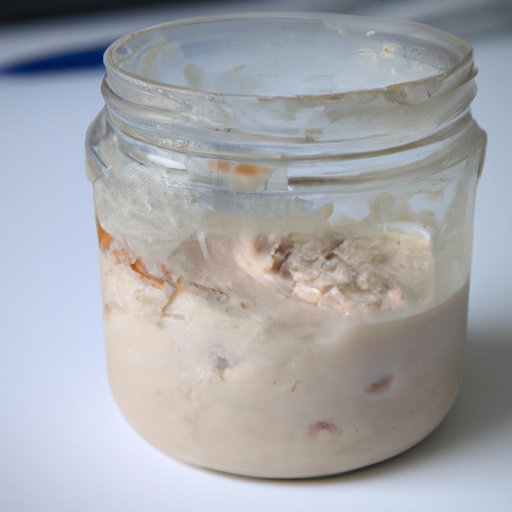
How to Know If Your Starter Is Bad
Making bread is an art form, and a good starter is the foundation of any delicious loaf. A starter is essentially a mixture of flour and water that provides the yeast and bacteria necessary to ferment the dough and create the coveted flavor and texture of handmade bread. However, a bad starter can ruin your bread and result in a disappointing finished product. In this article, we will discuss the signs to look for to determine if your starter has gone bad.
Signs of Mold or Discoloration in the Starter
If you notice any mold or discoloration in your starter, it’s time to throw it out and start anew. Mold can develop in your starter due to poor hygiene or improper storage, and it’s not safe to use a starter with mold. Discoloration can also be a sign of a bad starter. If your starter has turned brown or dark, it may indicate that it has gone bad. To prevent mold growth in the future, make sure to keep your starter in a clean, airtight container, and feed it regularly with fresh flour and water.
Foul Smell
If your starter has a sour and unpleasant smell, it may be a sign that the bacteria in the starter is not healthy. This smell can indicate that your starter is either underfed or has been contaminated by unwanted bacteria. To avoid this problem, make sure to feed your starter regularly and keep it at room temperature. You can also add a small amount of fruit juice to your starter to help maintain a healthy bacterial balance.
Lack of Bubbles
Bubbles are crucial in a starter as they represent the yeast and bacteria at work. If your starter has stopped bubbling, it may be a sign that the yeast and bacteria are no longer active. To troubleshoot a starter that has stopped bubbling, try feeding it with fresh flour and water and wait for a few hours to see if it becomes active again. If your starter still isn’t bubbling, you may need to start a new one from scratch.
The Starter Has Separated
If your starter has separated into layers, it may be a sign that it’s gone bad and is beyond saving. However, if the separation is normal, it’s essential to stir it back together before using it. A good starter should remain stable and have a consistent texture, with no layer separation.
Poor Rise/Expansion
If your starter isn’t rising or expanding as it should, it may be a sign that the bacteria and yeast have become inactive. There could be various reasons for this, such as temperature changes, insufficient hydration, or lack of feedings. To troubleshoot this problem, start by increasing the temperature of your starter, using warm water to feed it, and adjusting your feeding schedule to make sure you’re giving your starter enough time to ferment.
Absence of Tang
A tangy flavor in a starter indicates that it’s active and healthy. If your starter no longer has that distinctive tangy flavor, it may be a sign that the bacteria and yeast are no longer active. To get a tangy starter, make sure to feed it regularly and maintain it at room temperature. You can also experiment with different flours to develop different flavors.
Slime
If your starter has developed a slimy texture, it’s a sure sign that something is amiss. Slime can be a result of the overgrowth of bacteria or insufficient oxygen supply to the starter. To troubleshoot this problem, start by feeding your starter with enough flour and water and make sure to refresh it regularly. You can also try increasing the ventilation around your starter by using a loose-fitting lid or cheesecloth.
Conclusion
A healthy starter is the key to baking delicious homemade bread. By knowing the signs of a bad starter and troubleshooting the problems, you can maintain a healthy starter and achieve the perfect loaf every time. Remember to keep your starter at room temperature, feed it regularly, and experiment with different flours and techniques to develop unique flavors and textures.




